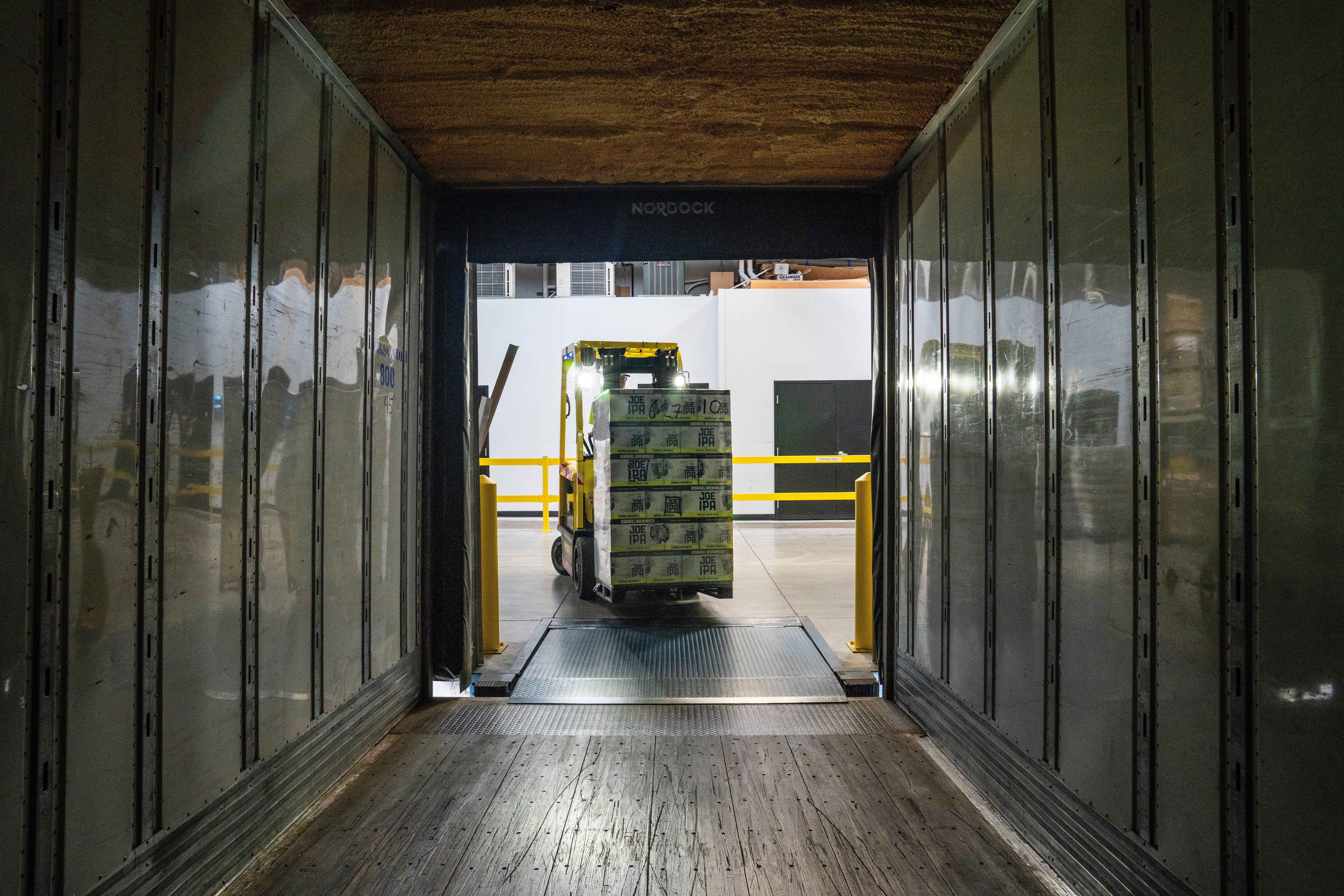How to Improve Your Warehouse Management System
Post on Tuesday, November 27th, 2018 in Accounting

A warehouse is not only a place to store your inventory. It also hosts all of the important logistics and inventory processes of your business. It is a sophisticated system that requires proper and seamless warehouse management structure to operate smoothly.
In this article, we are going to first expand on what warehouse management actually means and give some insight into how to improve a complex warehouse management system.
What Is Warehouse Management?
Broadly speaking, warehouse management refers to the handling and tracking of each movement within a warehouse. It overlaps quite a bit with order fulfillment and includes each of the following processes:
- Inbound operations: Activities that occur for incoming inventory items.
- Receiving: Accepting items from purchase orders.
- Returns: Accepting items that the customers have returned, like damaged items.
- Quality control: Checking items for damage and other inconsistencies.
- Placing: Organizing the received items inside the warehouse.
- Outbound operations: Activities that occur for outcoming inventory items.
- Picking: Locating the items that are ordered by customers.
- Packing: Placing the ordered items into packages and boxes according to the orders.
- Dispatching: Delivering the ordered items to a nearest warehouse or distribution center for further processing.
- Shipping: Transporting the items to the delivery address that was specified by the customer.
As you can see, there are a lot of interconnected processes that should be handled only by someone who knows how to manage a warehouse.
Each company usually has its own warehousing rules, some way better than others, so it is extremely important to apply best practices to a company’s existing structure even before a business starts growing. The more items that go through your company’s warehouse, the more efficient your warehouse management needs to be.

To help with that, here are some examples of effective warehouse management practices by the world’s most successful businesses. Each of these techniques is unique, and helped the business grow at scale.
Original Warehouse Management Techniques
- IKEA: In-store logistics and warehouse management.
- McDonald’s: Individual storage zones for various types of foods.
- Apple: Reduced number of storage locations all over the world.
- Amazon: Robotic warehouses.
- Walmart: Cross-docking approach.
Now let’s take a look at some tips that will help you build an efficient warehouse management system.
Tips For Improving Your Warehouse Management System
If you want to optimize your warehouse management, you’re in the right place. Not every business is the same, so some of these may not apply directly to you. But they should get you thinking strategically about how your warehouse is organized and managed.
Divide your warehouse into zones
Each company has items that need regular replenishment. At the same time, other items move quite slowly, like items sold only on holidays or during specific seasons (think Christmas decorations or beachwear).
Therefore, to optimize your warehouse management, you need to store the fast-moving items in areas that are easily accessible, like on lower shelves. As for the slow movers, we recommend that you place them on upper shelves or somewhere in the back of the warehouse.
You can apply the same principle to larger and smaller items, accordingly. You can also create zones based on the picking type and frequency – single order picking, batch picking, wave picking, etc.
Make the warehouse a comfortable working place for your employees
Lack of workplace comfort may lead to a loss of efficiency, which is unacceptable for a growing business. Make sure that specific items are stored in specific places, so the staff knows where to find them.
Hire a dedicated person or team for each warehouse management activity – receiving, picking, shipping, etc. – and assign corresponding supervisors to control each of those activities. Organize workstations with equipment that is necessary for each activity.
Keep the warehouse clean and clutter free
Try to get the most out of the vertical space such as racks and shelves, rather than occupying the floor space, and keep the aisles free.
Equip your warehouse with barcode scanners
The good old days of manual inventory tracking are long gone, so it is important that you implement the barcoding as early as possible, even if your business is just starting off. Implementing barcode technology will not only reduce a chance of human error but also prepare your business for growth and save you from unpleasant surprises. Barcode scanners are an integral part of any warehouse management system.
Automate the warehouse management operations
Adoption of modern technologies in a warehouse significantly speeds up and optimizes all processes that take place inside a warehouse. Smaller businesses use Excel spreadsheets to track their inventory, but as they grow, Excel is too limited to cover all inventory needs.
Therefore, we recommend that you implement specialized inventory management and multi-location warehouse software to automate basic processes. A powerful tool, such as the one that is offered by Dynamic Inventory, is an investment that will streamline your business and free you up for more productive tasks.
Conduct regular inventory audits
Such audits help to review the fast movers and slow movers, detect the damaged items, locate the miscounted or misplaced inventory, and more Inventory audits also involve cycle counting, which is the routine counting of specific inventory groups within a predefined time period or cycle, such as monthly, quarterly, yearly, etc.

Cycle counting helps analyze the discrepancies between the documents and actual inventory. Check out our post on how to conduct an inventory audit for more information.
Keep your warehouse safe
Make sure that your warehouse is a reliable place both for your employees and items. Install security cameras and hire a security service to guard the warehouse premises. Warehouse workers should also contribute to the overall security of your warehouse, so hire only people who you can trust.
For extra protection and theft prevention, you can review the daily transactions of your staff, label the items with smart tags, and inspect the items that are marked as damaged.
Conduct warehouse management training events
Such trainings increase the awareness of your warehouse staff regarding the industry specifics and rules of your warehouse management system. A well-trained staff is a key to success.
Decrease the number of available shipping boxes
If there are various sizes of boxes and containers, it may take the workers quite a lot of time to choose the optimal size for a particular order shipment.
Sometimes the size of a box is too small, and the shipment should be split into several smaller shipments, and vice versa. To fix this issue and save the time of your staff, choose 2 to 3 standard box sizes and several custom sized boxes for irregularly shaped items.
Shore up your warehouse management
Now you know how to improve and optimize your warehouse management system.
The organization of the physical space is up to you, but at least we can assist with the automation of some operational functions with our warehouse and inventory software solution.
Dynamic Inventory allows managers to focus on more important business processes instead of being dragged down in the weeds. Feel free to browse our website and see what we can offer, or contact us to schedule a live demo. We’d be happy to hear from you.

Adam is the Assistant Director of Operations at Dynamic Inventory. He has experience working with retailers in various industries including sporting goods, automotive parts, outdoor equipment, and more. His background is in e-commerce internet marketing and he has helped design the requirements for many features in Dynamic Inventory based on his expertise managing and marketing products online.
Learn how Dynamic Inventory can streamline your business today!
Schedule a DemoRelated Articles
see all
An Overview of Dell’s Supply Chain Strategy
Dell entered the market in 1985, and evolved from a small, dorm-room based company in Texas to one of the …

How to Improve Your Warehouse Management System
A warehouse is not only a place to store your inventory. It also hosts all of the important logistics and …

How To Write Product Descriptions That Actually Convert To Sales
A product description should not just be a bland list of a product’s features. After the price of an item, a …

